I learnt a lot about Sakakibara or Boy A through his website and book which Yu helped me to translate on Monday. It was very helpful!
I started this week's entry with a song originally sung by Yumi Matsutoya titled Sunano Wakusei (砂の惑星) or translated to Planet of Sand or Dunes. Sakakibara was apparently very obsessed with this song in which he mentions that the lyrics reminds him of the general idea of mothership. He feels that this is exceptionally interesting as Matsutoya herself never had a kid hence as if singing this song is a form of child-bearing, also at the same time an expression of mother earth. This echoes eventually with Sakakibara's drawing titled Adam and Eve which I will try to describe later in this post.
Let's take it as a hitsuzen, but as I was being explained in further details regarding Sakakibara, he seems to be more and more familiar (not just because of the information but also familiarity in my personal approach (especially in art making) and my direction towards how this project is growing.
DISCLAIMER: What might follow in this entry might be uncomfortable to read. My interpretation is based on translated reading of his autobiography as well as his website. I do not place any judgement towards Sakakibara and simply re-narrating his story as well as responding to them in any ways they are relevant to my project.
Boy A and His Grandmother
Sakakibara explained that the idea of death surfaced after the death of his grandmother. In his book too, the first page was a picture of an elderly lady with what seemed to be her grandson, assumably Sakakibara and his grandmother. This was translated into physical act of killing, in which he began by killing cats. But the interesting part is also when sexual connotation, or in fact, presentation that occurs when the killing was realized. Sakakibara had erection.
He also mentioned that his first masturbation happened after his grandmother's death in her room. He masturbated to his grandmother's photograph while thinking of her (might not be sexually as what he mentioned was because he was missing her, hence death seems to be more of an appropriate reason) and this happened when he was 14.
Going back to killing, he realized that taking the life of cats was no longer satisfactory which prompted him to kill human beings. He felt that he needed to feel better (sexually) and ejaculate more as by killing humans, he would get greater erection.
This seemed to be evident in one of the most controversial statement he ever included in the book. It was mentioned that after he decapitated one of his two victims, 11 years-old Jun Hase, he brought his head home, cleaned it with water in the shower with him naked and he did what was referred to as "much worse than killing". Although it was not stated what that specific act was, me and Yu concluded that he might have masturbated with the corpse. For him, this act granted him so much satisfaction that lead to his lack of sexual desire ("he could not get horny for the next two years).

The image above is one of his self portraits which further visualized his sexual situation. Eventually, he felt pain when he ejaculates, as what seemed to have started since he first masturbated in his grandmother's room. He seems to be still figuring the reason why, although it was mentioned that his doctor proposed maybe because he hated the idea of wanting to have sex. Side tracking a little bit, this condition is also common in young Japanese male population also known as Herbivore men (here). I believe that reasons of this social trend or situation differs from one to another, but might be an interesting side note to keep in mind.
Boy A and His Mother
Sakakibara talked quite lengthy of his grandmother and how she (to be more precise, her passing) had influenced his chains of thought but it is very little to know about his mother. It was stated that his mother went to comfort jun's mother after he went missing which means that the two families knew each other quite well. But there is an image he posted as part of his self portraits, of what seems to depict parental negligence and might have suggested that his had desire to extend his relationship with his grandmother towards his mother.
Naked and riding a slug, the image is accompanied by a poem. Basically, it is an expression of how he wanted his mother to pay attention to him, visualised by the trails of mucus.
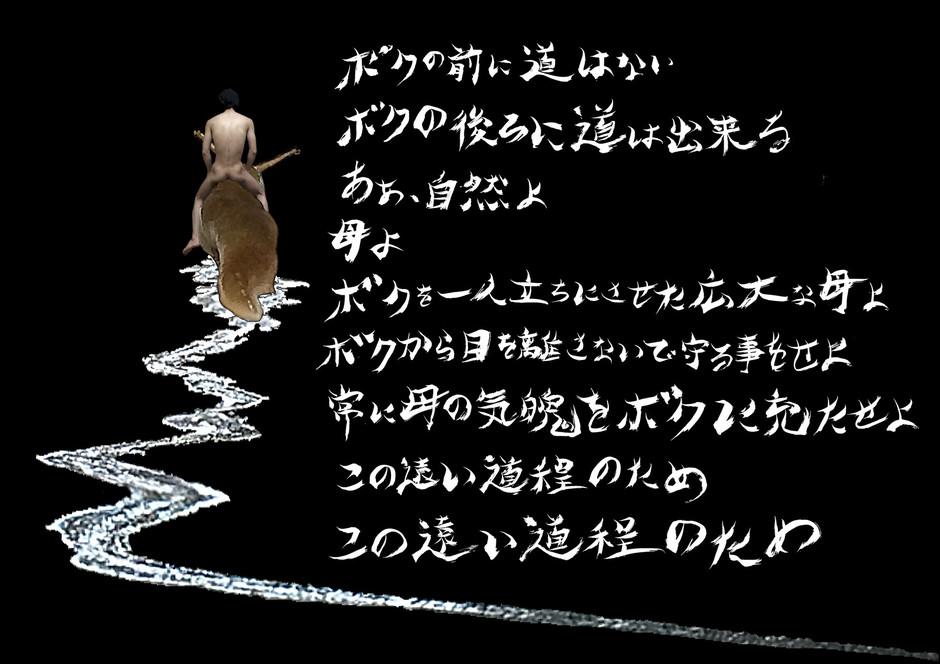
Boy A and Slugs
Readers have been unconvinced regarding Sakakibara's book which includes apology letter and tones of regret. However, I can not help to feel sympathy when he introduced slugs in his narration.
For Sakakibara, slugs are a perfect representation of Boy A. They are hated by almost everyone due to their imperfection reflecting his own social situation as poor and ugly. Slugs have antennas which function as their sight organs which he feels as if he had a pair himself. For him, they are reaching into people's mind as he is trying to speculate or see through what people are thinking about him. This habit started when he was 14 as he always paid attention, particularly to adults looking (directly or unconsciously) at him.
The mucus of the slugs also remind him, apart from trails of existence, an idea of sensitivity which he was particularly struggling with at early age.
Interestingly, before he started killing cats, he was collecting slugs and slaughtering them. He felt that by taking away their life, he was able to make sure that they were alive. Hence, he killed to prove that life exists, almost to me, like positioning himself as a creator (I will talk about this later). However, hints of amusement in executing this act was also apparent as he mentioned that slugs are relatively slow, hence in comparison to him, they had no chance of escaping, death.
In later chapter of his life (his website), his obsession towards slugs became more evident in the series of visuals he created out of them. He seems to have done a substantial observation towards the molluscs. He realized that they would move towards a singular direction, especially at the brink of death. He feels that they were trying to survive by sharing water by tangling their bodies with each other.
This obsession developed was so embedded that anything he sees starting to look like slugs.
In conclusion, he feels that slugs, although they are imperfect (visual-wise), are the epitome of perfection. Their simplicity results in their forms being easily modified and visualized or drawn. Furtherore, their simplicity seems to be a reason why he thinks that they are hated by people but for him, this was a well-designed creation of God.
This is what he feels as the most perfect image of slugs he ever taken.

Then he introduced his process in creating a 寄せ絵-inspired piece using images of the slugs. 寄せ絵 (yose-e) is a style of Japanese ukiyo-e painting where collages of objects, usually human bodies and animals create a large image of, usually human face or animal.

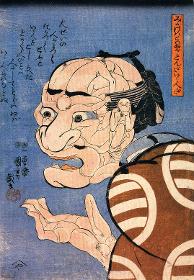
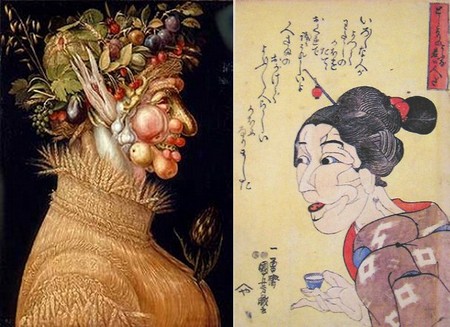
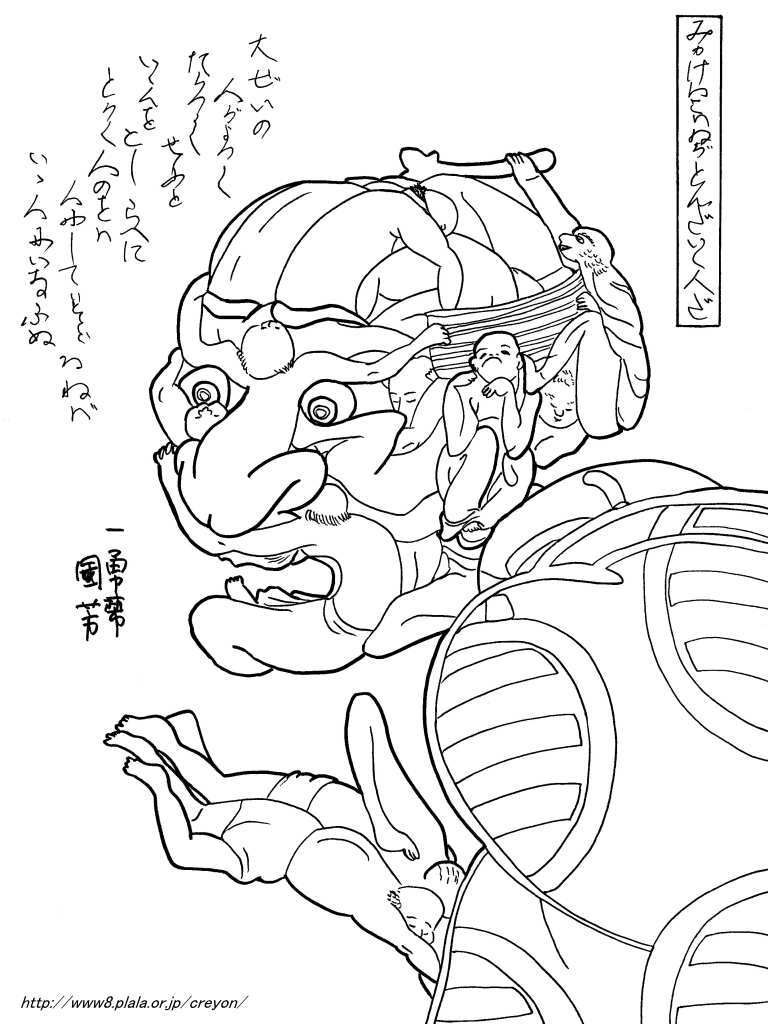
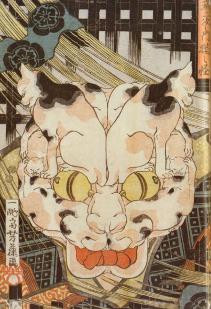
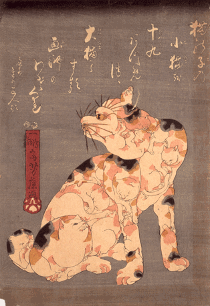
and the result eventually looks like this:
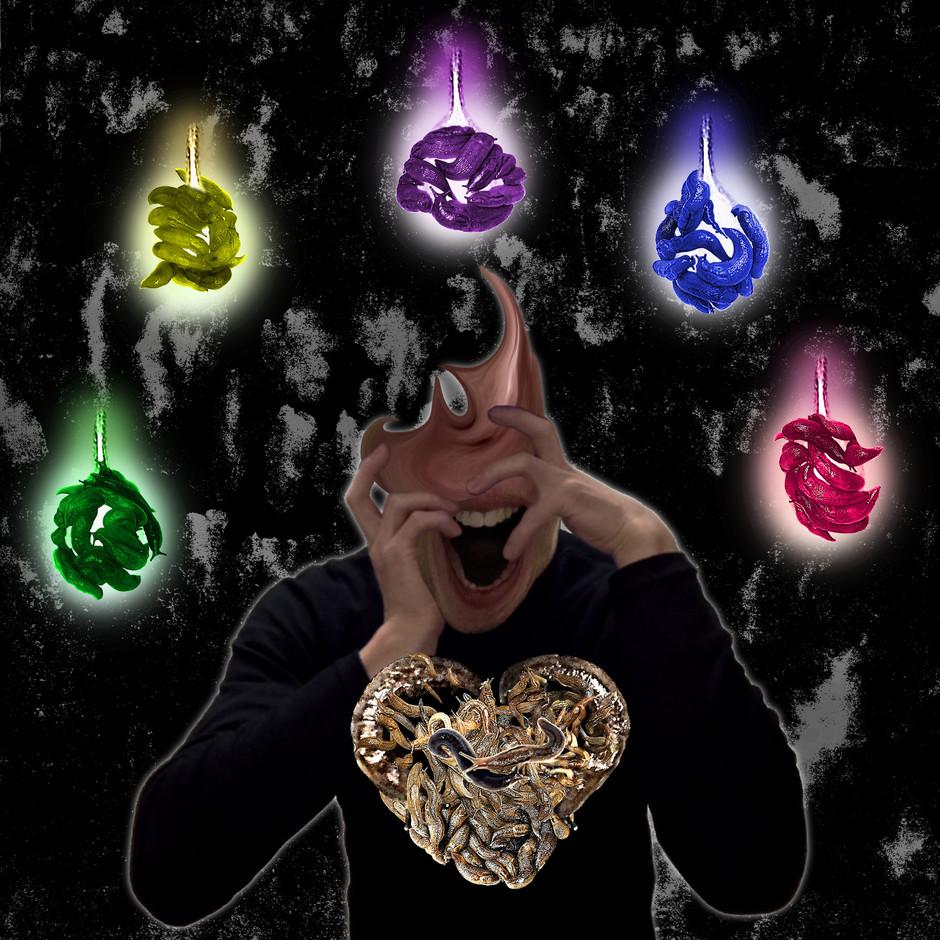
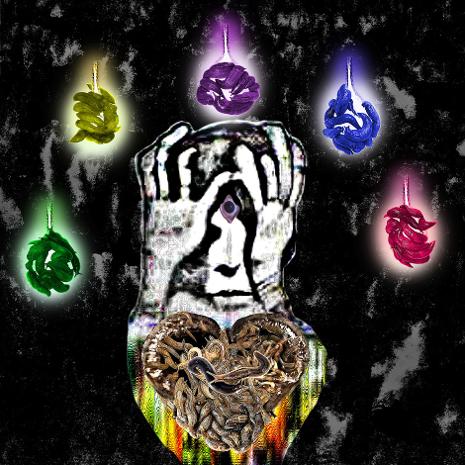
Maybe a separate note as the collage of slugs, it is also interesting to note that slugs are in general, hermaphrodite. However, despite having both male and female reproductive system, slugs require partners to mate and reproduce.
Boy A and His Heart
In his experiment of photographing the slugs, he mentioned that he created a stage, in the shape of a black heart. I initially thought that it was a found object, but apparently he constructed them in such a way that the slugs can 'enter' the stage of photography. However, the basin might have been heart-shaped from the beginning although he painted it black. During photo-taking session, he would motivated the slugs by saying lines of encouragement like you are beautiful, you are perfect, and such.


I am quite drawn into his choice of black heart which he does not seem to explain the reason behind his choice. However, it is stated that he does have heart problem. I do not think there is a conscious relationship between the two but might be interesting to try making a parallel.
He also believes that he lives in an imagined world most of the time, which he stated as megalomania. It is a psychopathological condition characterized by delusional fantasies of power, relevance omnipotence and by inflated self-esteem.
This seems to be visualized through the process of his works and eventually the series of self portraits and ultimately his memoir.
He also mentioned that the idea of creating something becomes a replacement of his desire or attempt to kill people. He realized this after he wrote in his poetry after he was convicted of murder titled 13 Years in Prison. Interestingly, this poem consists of collaged scripts from the movie, Predator 2.
Boy A and The Tree
Sakakibara created a piece titled Adam and Eve, which I briefly mentioned at the beginning of this entry. This is the work:
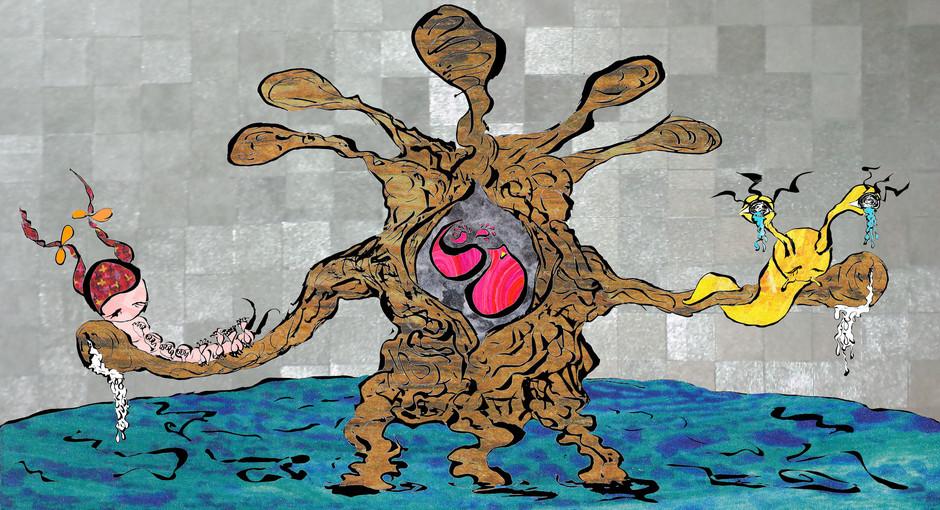
For my attempt to explain this work, I am going to ignore the Adam and Eve, those two slugs-looking figures sitting on the branches. The focus will be on the tree and the pond as they were based on an existing site from Sakakibara's childhood, particularly during the time he committed the murder. He mentioned in his book that he had three favourite places in which two are the a tree and a pond. For him the tree was a symbol of fertility as the trunk reminded him of vagina while its branches, male's penises. Likewise, the pond had tadpoles which reminded him of sperm. Do note that this was from the mind of 14 years old, might have been a result of recent sex education in school.
He feels the desire to return to his mother's womb, as a fetus, represented by the crimson alien-looking figure in the image above. With these images in mind, he acted upon another interesting move after the murder.
He took Jun's head and planted it beneath the tree hoping that with the power of earthly energy, Jun will be brought back to life.
This shows me, as a observer and reader of his biography, that Sakakibara acted upon the murder as truly, a form of meditation. Or even 'medication'. Sexual desire of a teenage boy, maternal negligence which resulted in extreme distress of her replacement's death (grandmother's), as well as his psychological condition and INJF personality contrasted with his personified image of slugs and imperfection might have led him to commit one of Japan's most brutal child murder.
Sakakibara also mentions that his book will be the first and last that he would share about his experience and the website will be the only means of social network system which he communicates with. Yu and I ended our translation journey by wondering, if he ever is serious about returning to the womb, as suicide might have been subtly hinted.

To be honest, to have spent time reading and listening to his story (regardless of his sincerity) has brought me into positions where I am unable to comprehend, as I felt mostly sympathetic about him. Let me bring back the whole philosophy of hitsuzen, if things happen because they are meant to be and as contributions to future events, are our judgements necessary?
